On the afternoon of February 15, the 9th extraordinary session of the 15th National Assembly continued to discuss in the hall. National Assembly deputies from Binh Dinh province contributed their opinions on the Supplementary Project on Socio-Economic Development in 2025 with a growth target of 8% or more; investment policy for the Lao Cai - Hanoi - Hai Phong railway construction project and the draft Resolution of the National Assembly to pilot a number of specific and special mechanisms and policies to develop the urban railway network system in Hanoi and Ho Chi Minh City.
Removing bottlenecks, mobilizing combined strength to ensure sustainable development
Deputy Head of the Provincial National Assembly Delegation Ly Tiet Hanh participated in giving comments to contribute to further completing and ensuring the feasibility of the Supplementary Project on Socio-Economic Development in 2025 with a growth target of 8% or more.
Deputy Head of the Provincial National Assembly Delegation Ly Tiet Hanh participated in the discussion in the hall about the Supplementary Project on Socio-Economic Development in 2025 with the growth target of 8% or more. Photo: Provincial National Assembly Delegation |
After studying the Government's Submission No. 53/TTr-CP, the National Assembly Economic Committee's Verification Report and related information and documents, delegate Ly Tiet Hanh expressed his agreement and high support. Delegate Ly Tiet Hanh said that the Government has built an 8% growth scenario with many specific and outstanding contents. The National Assembly is also very determined in quickly completing institutions to create a legal corridor, ensuring sustainable development in the new period. "Thus, it can be seen that there is a very high political determination in implementing growth targets not only for 2025 but also for the coming period," said Delegate Ly Tiet Hanh.
Although GDP growth continues in 2024, there is still room for higher growth in 2025. However, analyzing the main pillars of GDP growth: public investment, production, export and purchasing power (consumption), Deputy Ly Tiet Hanh acknowledged that exports still rely mainly on FDI enterprises, while most domestic enterprises still face many difficulties, the number of enterprises ceasing operations is quite large, access to credit is still low... Notably, the world situation has unpredictable fluctuations, the risk of trade war reduces the purchasing power of the world market... Therefore, Deputy Ly Tiet Hanh recommended that the Government and the National Assembly need to consider the above issues; calculate scenarios to ensure the high feasibility of the Project.
In addition, Deputy Ly Tiet Hanh also suggested that it is necessary to focus on removing bottlenecks in administrative procedures so that the economy can quickly absorb capital from the first 6 months of 2025. In particular, it is necessary to pay attention to investment projects of the private sector. To do this, Deputy Ly Tiet Hanh suggested that it is necessary to more closely assess the current difficulties of the domestic private sector, especially small and medium enterprises in the export sector; help them proactively take measures to cope with fluctuations in the world market to have effective solutions to support domestic enterprises, creating favorable conditions for enterprises to access capital to invest, develop production and business, and export goods.
2025 is also the final year of the 5-year Plan and focuses on implementing a huge amount of work, both ensuring the implementation of key projects and ensuring resources for development investment, taking care of people's lives. Along with that is the implementation of national target programs, so it is necessary to unlock resources, attract investment, and mobilize social investment capital. From there, Deputy Ly Tiet Hanh recommended that the National Assembly consider the Government's proposal to increase public investment, accept a higher budget deficit than the previous year and increase credit under the condition that inflation reaches the target of below 5%.
At the same time, it is necessary to use financial and credit tools to stimulate investment and consumption, have policies to promote the tourism market and quickly recover the real estate market to increase the total demand of the economy. For the tourism industry, the current revenue from tourism is still modest compared to the potential, so Deputy Ly Tiet Hanh proposed to clearly define the nature of the "composite economy" of the tourism industry to arrange it in the group of composite economic sectors and have appropriate policies to promote tourism development.
Emphasizing that the role of localities in implementing growth targets is very important, in the Government's Project as well as in the National Assembly's Resolution, Deputy Ly Tiet Hanh suggested that it is necessary to clearly define the role, position, opportunities, and responsibilities of localities, creating conditions for localities to promote well, rise up, especially in public investment and keeping pace, participating in new growth drivers, developing new and advanced production forces. "I think that not every province will develop the same, but each locality, each region will have its own potential, strengths, and advantages. The important issue is how to properly assess and create favorable mechanisms to promote the real participation of localities, thereby creating a combined strength for our country to enter a period of prosperous and sustainable development," said Deputy Ly Tiet Hanh.
Building a synchronous, efficient and modern urban railway network
Speaking at the meeting, Deputy Nguyen Van Canh (National Assembly Delegation of the province) expressed his agreement with the issuance of the National Assembly Resolution on piloting a number of specific and special mechanisms and policies to develop the urban railway network system in Hanoi and Ho Chi Minh City, and said that the contents of the Resolution will contribute to mobilizing all resources, shortening the progress, and improving the investment efficiency of urban railway lines in Hanoi and Ho Chi Minh City.
Delegate Nguyen Van Canh participated in a discussion at the conference hall on the development of urban railway network systems in Hanoi and Ho Chi Minh City. Photo: Provincial National Assembly Delegation |
According to Deputy Nguyen Van Canh, the main customer group of urban railways will be people living within a reasonable walking distance to the stations. The number of people using the railway lines is a factor to evaluate the investment efficiency of the lines. Because the urban railway lines have stations mainly in existing residential areas, the supply may not meet the demand at present, many people living near the stations may not have the need to use the urban railway. Many people who need to use the urban railway live quite far from the stations. Based on that reality, Deputy Nguyen Van Canh suggested that the Central Government and the two localities consider a mechanism to support the form of house-for-house exchange, support procedures for quickly converting land and housing ownership.
"A policy that benefits the people and improves the efficiency of public asset use will receive high consensus, contributing to improving the effectiveness and efficiency of policy making," said Deputy Nguyen Van Canh.
Connecting railway lines will improve the efficiency of each line and the entire system. In the planning of the entire line, there is a connection system. Delegate Nguyen Van Canh raised the issue, when only a few lines have been completed, some lines have not been 100% completed and have been put into use, how will the temporary connection be implemented? Delegate Nguyen Van Canh cited: "Currently, the Cat Linh - Ha Dong line and the Nhon - Hanoi station line are not connected internally within the system but through the bus system that stops at many stations between Cat Linh station and Cau Giay station, increasing the time and travel costs of people. Normally, to transport passengers within the system, they use Shuttle buses, which are usually only used between 2 points, customers do not have to pay extra or be controlled when getting on and off this type of bus."
From that reality, Deputy Nguyen Van Canh suggested that in the immediate future, it is necessary to add a number of shuttle buses to travel between Cau Giay station of the Nhon - Hanoi Railway Station line and Cat Linh station of the Cat Linh - Ha Dong line. When passengers get off the train, they can go straight to the bus without having to leave the station to catch the bus, and the bus does not stop to pick up or drop off passengers along the way like the current bus routes. "We may spend more money to maintain a few buses, but it will help improve the travel efficiency of the two metro lines that have been invested with tens of thousands of billions," Deputy Nguyen Van Canh expressed.
At the same time, Deputy Nguyen Van Canh also proposed to study the form of selling tickets for both routes. Customers who buy a ticket once can go from any station of one route to any station of the other route. Thus, it can be considered that the two routes have been connected, which will create convenience for people. The number of users will increase, improving the operational efficiency of these two metro routes. The same can be applied to future routes to improve operational efficiency when we have not completed the entire metro system.
In addition, Deputy Nguyen Van Canh proposed that Clause 1, Article 3 of the Resolution "Developing urban areas according to public transport orientation (TOD)... take the urban railway traffic connection point as the concentration point of residents, commercial services, offices..." and will be rewritten as: "Developing urban areas according to public transport orientation... take the urban railway traffic connection point as the concentration point of offices, commercial services, residents..." Because according to Deputy Nguyen Van Canh, the adjustment helps design TOD more appropriately, which will create convenience for people when traveling and shopping in the order of station, office, commercial, residential area.
In addition, many stations currently do not have commercial services around or inside the station. To better meet the needs of customers, Deputy Nguyen Van Canh also suggested that Hanoi and Ho Chi Minh City study allowing mini supermarkets to open near the entrances and exits of stations so that customers can use fast food services or buy essential items and supplies. Stations next to shopping malls should build light overpasses connecting directly to the upper floors so that customers do not have to go down the street to get to the shopping mall, helping people have better transportation services, especially when it rains or is very sunny.
HONG PHUC - P.PHUONG
Source: https://baobinhdinh.vn/viewer.aspx?macm=1&macmp=63&mabb=331358


![[Photo] General Secretary To Lam attends the conference to review 10 years of implementing Directive No. 05 of the Politburo and evaluate the results of implementing Regulation No. 09 of the Central Public Security Party Committee.](https://vphoto.vietnam.vn/thumb/1200x675/vietnam/resource/IMAGE/2025/5/19/2f44458c655a4403acd7929dbbfa5039)


![[Photo] Panorama of the Opening Ceremony of the 43rd Nhan Dan Newspaper National Table Tennis Championship](https://vphoto.vietnam.vn/thumb/1200x675/vietnam/resource/IMAGE/2025/5/19/5e22950340b941309280448198bcf1d9)
![[Photo] Close-up of Tang Long Bridge, Thu Duc City after repairing rutting](https://vphoto.vietnam.vn/thumb/1200x675/vietnam/resource/IMAGE/2025/5/19/086736d9d11f43198f5bd8d78df9bd41)
![[Photo] President Luong Cuong presents the 40-year Party membership badge to Chief of the Office of the President Le Khanh Hai](https://vphoto.vietnam.vn/thumb/1200x675/vietnam/resource/IMAGE/2025/5/19/a22bc55dd7bf4a2ab7e3958d32282c15)

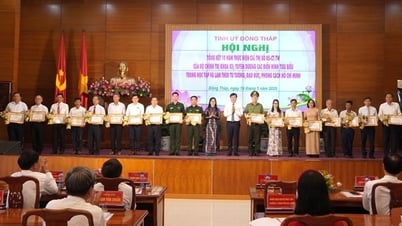

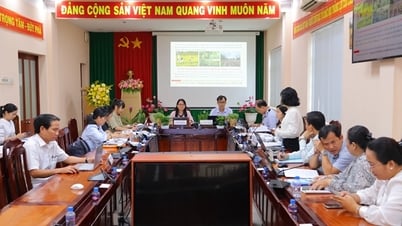
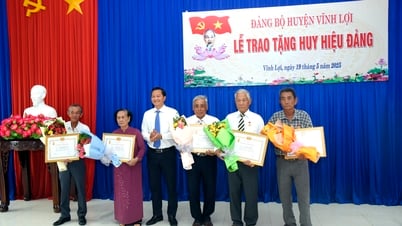
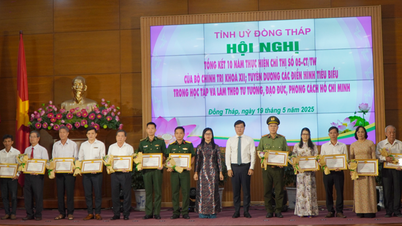






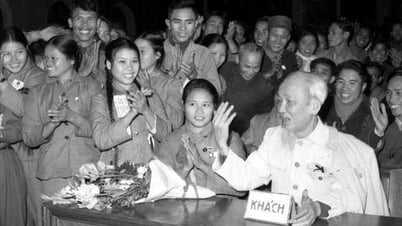




































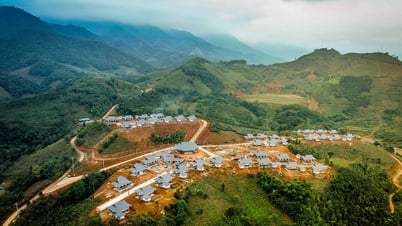















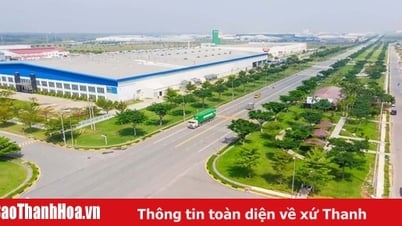

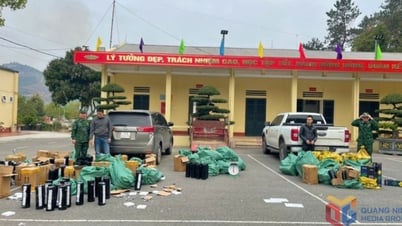

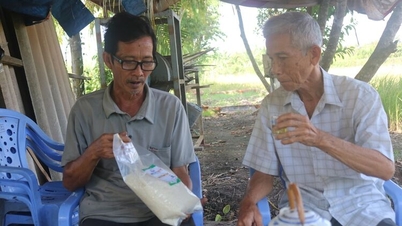

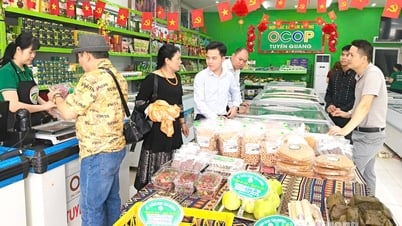






![[VIDEO] - Enhancing the value of Quang Nam OCOP products through trade connections](https://vphoto.vietnam.vn/thumb/402x226/vietnam/resource/IMAGE/2025/5/17/5be5b5fff1f14914986fad159097a677)



Comment (0)